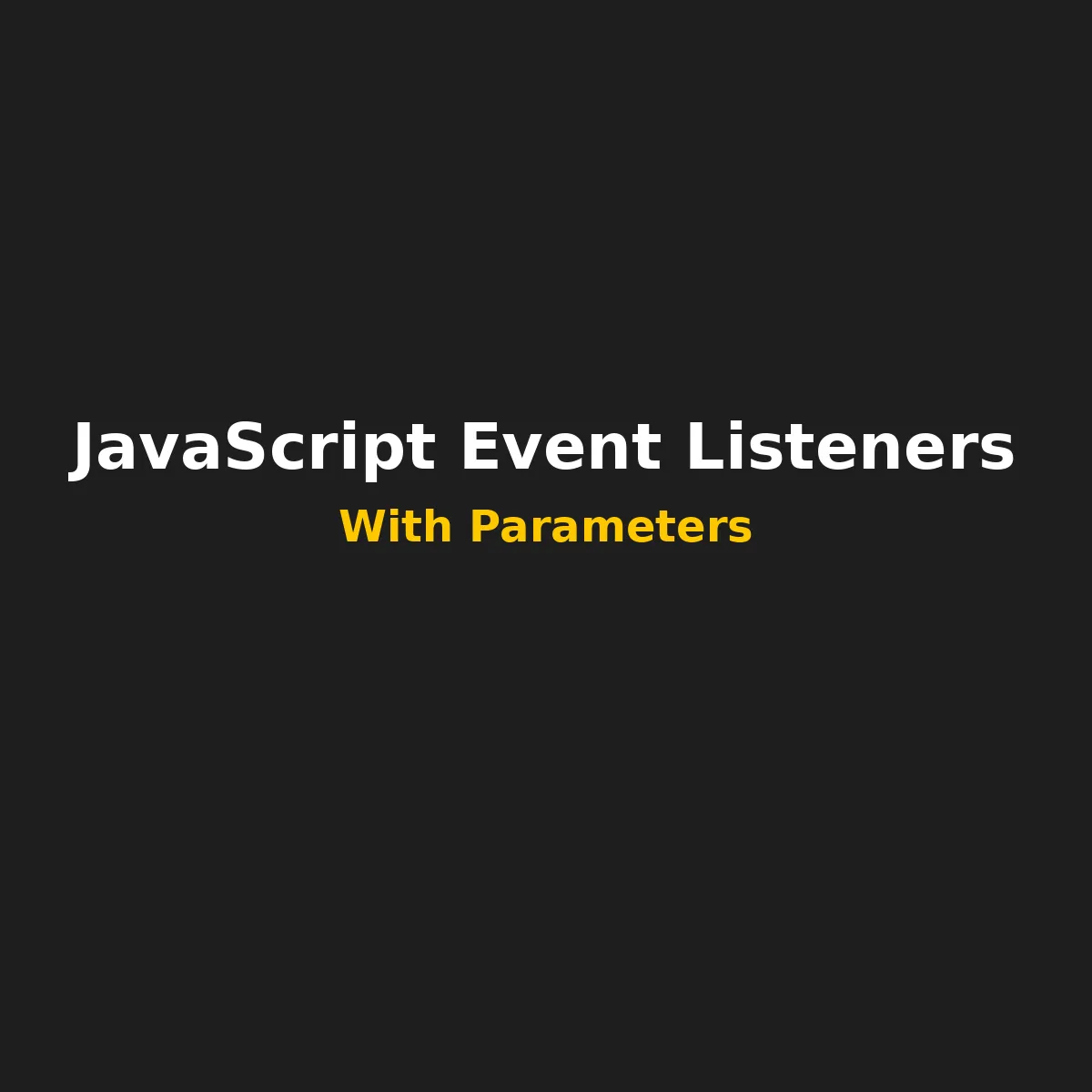Event handlers with parameters can be surprisingly tricky in JavaScript. If you’re not careful, you’ll find your handler firing too early, leaking memory, or being impossible to remove. In this deep dive, we’ll explore multiple techniques for passing parameters the right way—using closures, bind, arrow functions, and AbortController—along with practical, real-world examples.
What You’ll Learn
- How to pass parameters into event handlers without breaking functionality
- When and why closures,
bind(), or arrow functions are appropriate - How to write clean, removable, and memory-safe event listeners
- How to handle events in dynamic UIs using AbortController
Common Mistake: Invoking the Handler Early
This is a classic beginner mistake:
button.addEventListener('click', myHandler(param));This immediately calls myHandler and passes its result—not a function—to addEventListener. Instead, we need to return a function reference. Let’s look at different solutions.
Option 1: Closure Factory Function
This method uses a closure to store the parameters and return the actual event handler:
function createHandler(id) {
return function(event) {
console.log(`Clicked item ID: ${id}`);
};
}
const handler = createHandler(123);
button.addEventListener('click', handler);
button.removeEventListener('click', handler);Closures are powerful and maintain a consistent reference—critical for removal later.
Option 2: Arrow Function (Currying Style)
Arrow functions are useful for quickly wrapping calls and parameters:
const handler = (id) => (event) => {
console.log(`Clicked item ${id}`);
};
button.addEventListener('click', handler('ABC123'));But remember: if you’re generating the arrow function inline, you won’t be able to remove it later unless you store the returned function somewhere.
Option 3: Using bind() to Preload Parameters
Function.prototype.bind lets you prefill arguments while preserving the handler’s reference:
function handler(message, event) {
console.log(message, event.type);
}
const bound = handler.bind(null, 'Button clicked');
button.addEventListener('click', bound);
button.removeEventListener('click', bound);The first argument to bind() is the context (often null), followed by preloaded parameters. The event object always comes last.
Option 4: AbortController (Modern Cleanup)
AbortController lets you attach multiple listeners and clean them up all at once—great for dynamic UIs or SPAs:
const controller = new AbortController();
button.addEventListener('click', (e) => {
console.log('Clicked with AbortController');
}, { signal: controller.signal });
// Clean up all listeners bound to this signal
controller.abort();Use this in modern apps with many DOM additions/removals. It helps avoid leaks and ghost handlers.
Real-World Example: Dynamic Button List
Let’s build a real-world pattern where buttons are generated dynamically and cleaned up on removal:
function makeButton(id) {
const btn = document.createElement('button');
btn.textContent = `Delete Task ${id}`;
const handler = () => {
console.log(`Deleting ${id}`);
btn.remove();
};
btn.addEventListener('click', handler);
return btn;
}
const container = document.getElementById('tasks');
[1,2,3].forEach(id => {
container.appendChild(makeButton(id));
});When to Use Each Pattern
- Closures: Safe, preferred for capturing values and removability
- Arrow functions: Best for quick use, not removable if anonymous
- Bind: Good when reusing the same handler with different arguments
- AbortController: Ideal for modern SPA cleanup
Final Tips and Gotchas
- Never call the handler directly inside
addEventListener() - Store handler references to allow
removeEventListener - Use
once: trueorsignalfor automatic cleanup - Don’t assume
bind()passes the event as first argument—it comes last
Conclusion
Passing parameters to JavaScript event listeners is easy to mess up—but with the right patterns, you can keep your UI code clean, memory-safe, and easy to maintain. Whether you prefer closures, currying, bind, or AbortController, each has a place depending on your use case. Use them wisely!


Leave a Reply